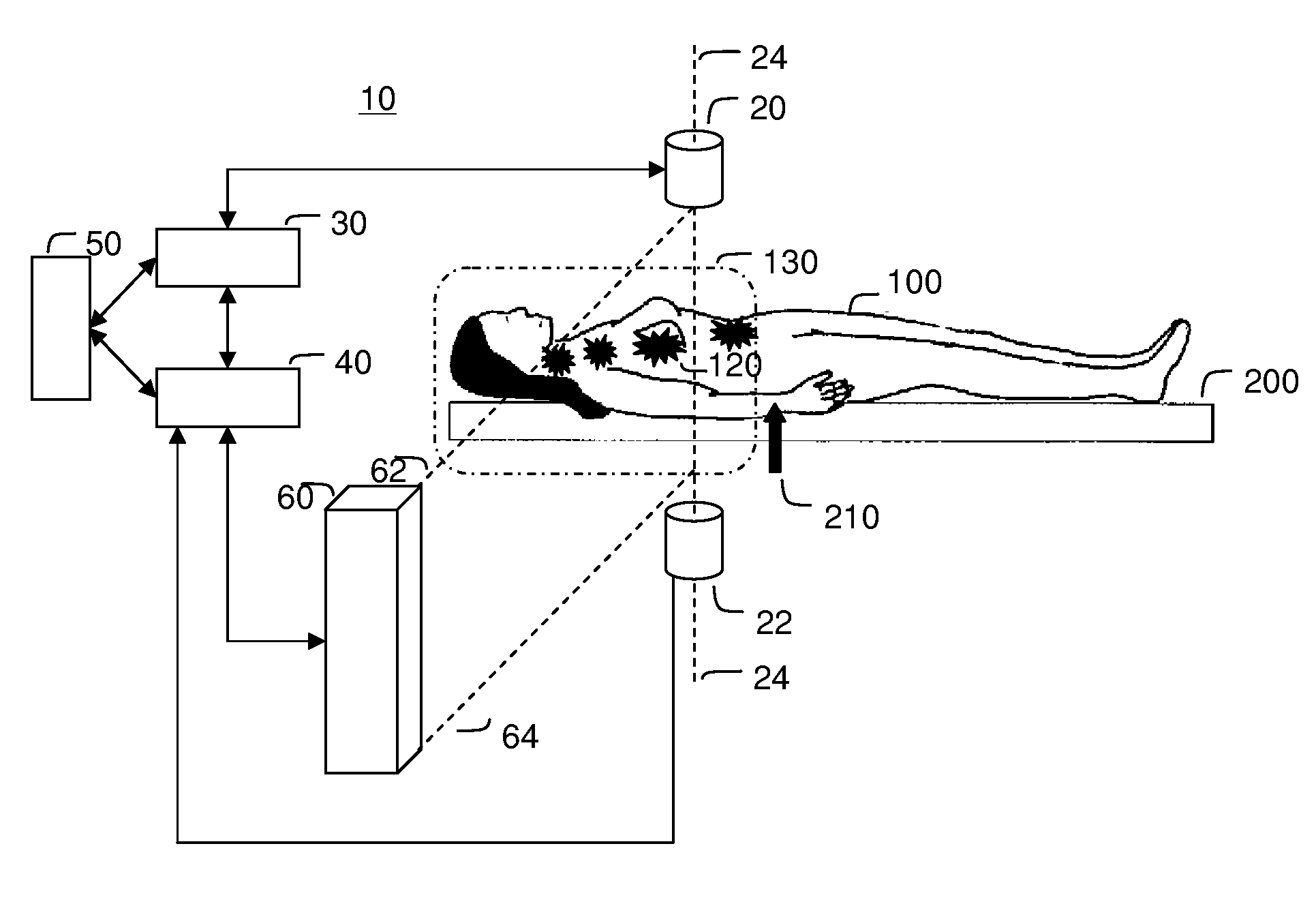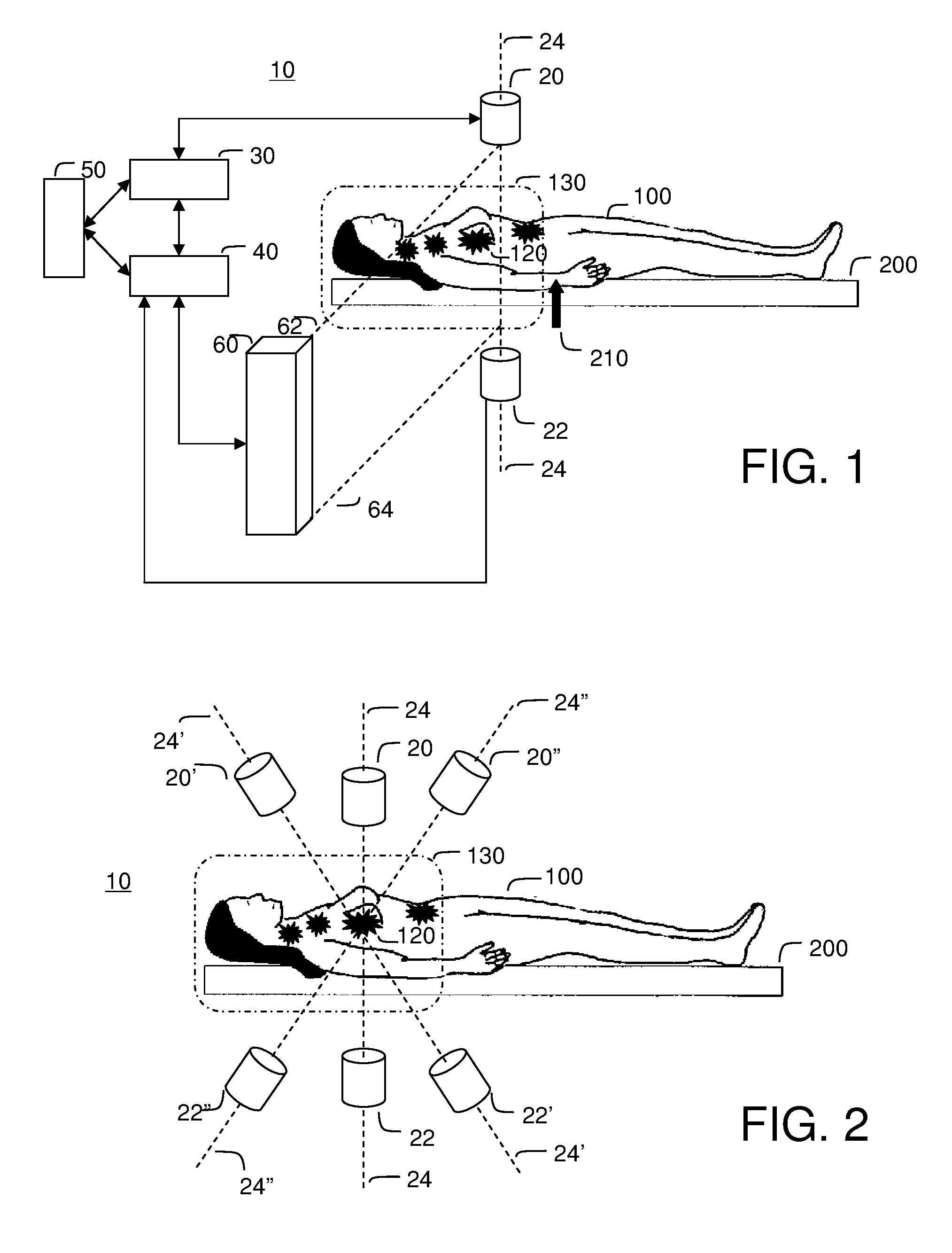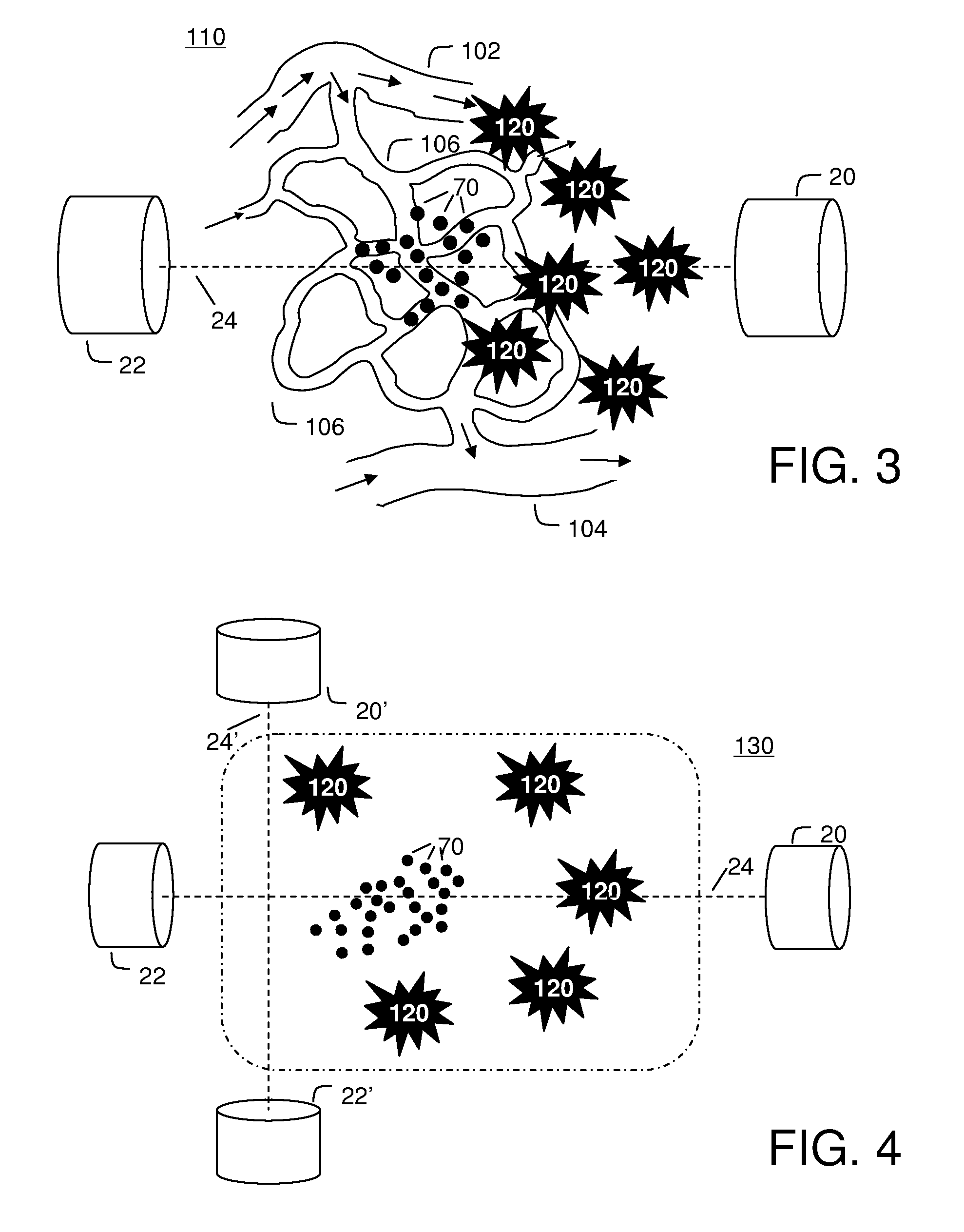Methods And Systems For Using Therapeutic, Diagnostic or Prophylactic Magnetic Agents
a technology of diagnostic or prophylactic magnetic agents and methods, applied in the field of magnetic therapeutic systems and methods, can solve the problems of poor blood supply of metastases in patients with late-stage disease, difficult access to metastases in this region, and dramatic improvement of therapeutic efficacy, so as to improve the effect of treatment effect and poor blood supply
- Summary
- Abstract
- Description
- Claims
- Application Information
AI Technical Summary
Benefits of technology
Problems solved by technology
Method used
Image
Examples
example 1
Saddle Motion Control at Blood Vessel Walls
[0108]FIG. 3 illustrates the saddle motion control of ferrofluid in a blood vasculature network. The magnetic field is strongest along the magnet axis 24 and the ferrofluid will flow to this axis along the inside of blood vessel walls. Once near the axis, the particles will flow toward the nearest or strongest magnet. By varying magnet strength and positioning the saddle on either side of the majority of the ferrofluid, the ferrofluid can be shuttled between magnets to focus, on average, to the tumor location 120.
[0109]Focusing in two dimensions perpendicular to the axis between the magnets is passive: the highest magnetic field is along the axis and so the magnetic forces point in toward the centerline. These passive forces will move the particles toward this axis along the inside blood vessel walls irrespective of the precise shape of the vasculature network. To further improve focusing with respect to the unknown vascular geometry, it is...
example 2
Control of a Single Droplet of Ferrofluid
[0111]Control of a single droplet of ferrofluid along arbitrary paths, far away from all control magnets, has been demonstrated in the experiment shown in FIG. 13. In this experiment the ferrofluid droplet was controlled along a ‘UMD’ path (for University of Maryland) in the center of the experiment. The magnetic field was shaped in time and space to achieve this control. Every time the ferrofluid droplet was to the North of its desired location, the South magnet was turned on; if it was to the East of its desired location, the West magnet was turned on to an appropriate strength (computed by the model above). This experiment demonstrates that dynamic shaping of the magnetic field can control a collection of magnetic nano-particles along an arbitrary path deep between magnets.
example 3
Electromagnet Control and Sensing
[0112]We now describe a further experiment. The ability to control and sense magnetizable nanoparticles in a ferrofluid at distances greater than 30 cm will be confirmed via the following procedure. The required stronger (˜1.5 Tesla) magnets will be custom made from microbore copper piping (to allow in-situ water cooling) wound onto an appropriate core. The magnets will be driven by high-quality high-current kW power suppliers and amplifiers. A quiescent blood-mimic fluid such as that described by KV Ramnarine et al. (1998) Ultrasound in Medicine & Biology 24:451-459 (85% distilled water, 10% glycerol, 5% other additives) will be inside a clear 0.5 m on a side cubic container placed between sets of electromagnets. More than one magnet is needed to combat diffusion and buoyancy forces. A commercially available ferrofluid from Chemicell (Berlin, Germany) will be used that is composed of 250 nm diameter magnetizable particles.
[0113]Two, then six electro...
PUM
 Login to View More
Login to View More Abstract
Description
Claims
Application Information
 Login to View More
Login to View More - R&D
- Intellectual Property
- Life Sciences
- Materials
- Tech Scout
- Unparalleled Data Quality
- Higher Quality Content
- 60% Fewer Hallucinations
Browse by: Latest US Patents, China's latest patents, Technical Efficacy Thesaurus, Application Domain, Technology Topic, Popular Technical Reports.
© 2025 PatSnap. All rights reserved.Legal|Privacy policy|Modern Slavery Act Transparency Statement|Sitemap|About US| Contact US: help@patsnap.com



